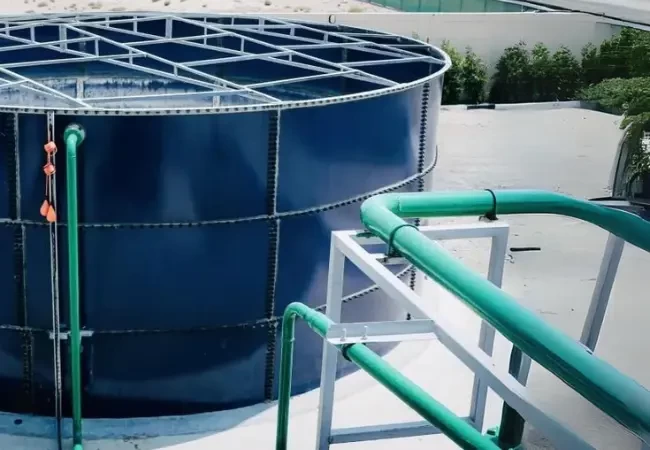Turbidity Treatment Systems
Turbidity treatment systems are essential for improving water quality by removing suspended particles that cause cloudiness, known as turbidity. These particles can include sediment, algae, and other organic and inorganic materials. High levels of turbidity can affect the performance of downstream treatment processes and compromise water quality. Selecting the appropriate turbidity treatment system depends on the turbidity load in the feed water. Here are some commonly used systems:
Multimedia Filter
A multimedia filter is an advanced filtration system that uses multiple layers of media to remove suspended solids from water. Typically, these layers include gravel, sand, and anthracite coal, each with different particle size ranges.
Benefits:
- High Dirt Holding Capacity: Can handle larger volumes of suspended solids before requiring backwashing.
- Versatility: Suitable for a wide range of turbidity levels and water types.
Sand Filter
Sand filters are one of the most common and straightforward methods for turbidity removal. They use a bed of sand to filter out suspended particles from water.
Benefits:
- Cost-Effective: Simple design and low operational costs make it a popular choice for many applications.
- Reliable Performance: Effective for moderate turbidity levels and easy to maintain.
High Rate Solid Contact Clarifiers (HRSCC)
High-Rate Solid Contact Clarifiers (HRSCC) combine the processes of coagulation, flocculation, and sedimentation into a single unit, optimizing the removal of turbidity.
Benefits:
- Compact Design: Offers a smaller footprint compared to traditional clarifiers.
- Efficient Removal: Provides high efficiency in removing both large and small particles, making it suitable for high turbidity loads.

Water Treatment Systems
- Reverse Osmosis plant
- Multi Media Filter
- High Rate Solid Contact Clarifier - HRSCC
- PRO ATHENA
- BEV Systems
- PRO MINI
- HERO Modular Systems
- SeaTECH Series
- SKYLINE Seawater RO
- SeaPRO E-Series
- Mineral Dosing
- Iron Removal
- Silica Removal
- Seawater Desalination
- Brackish Water Reverse Osmosis (RO)
- Mixed Bed Deionizer
- Electrodeionization (EDI)
- Ozonation & UV
- Closed Circuit Reverse Osmosis
- Sewage Treatment Plant (STP)
- Effluent treatment Plant (ETP)
- Odour Control System
- Anaerobic Reactor (UASBR)
- DAF - Dissolved Air Flotation
- MBBR-Effluent treatment
- Membrane Bio Reactor
- Continuous Fill Batch Reactor
- Sequential Batch Reactor (SBR)

